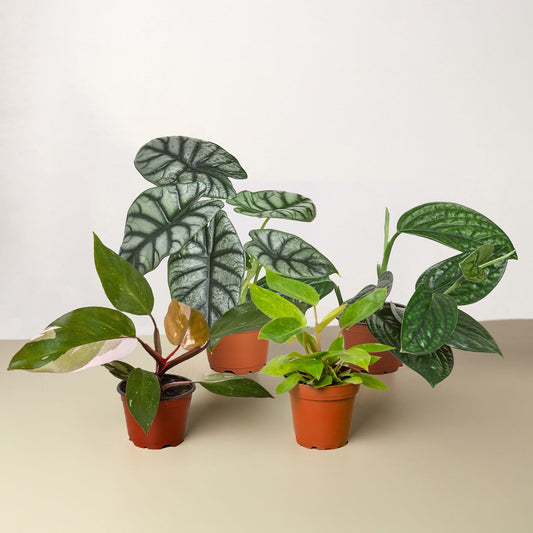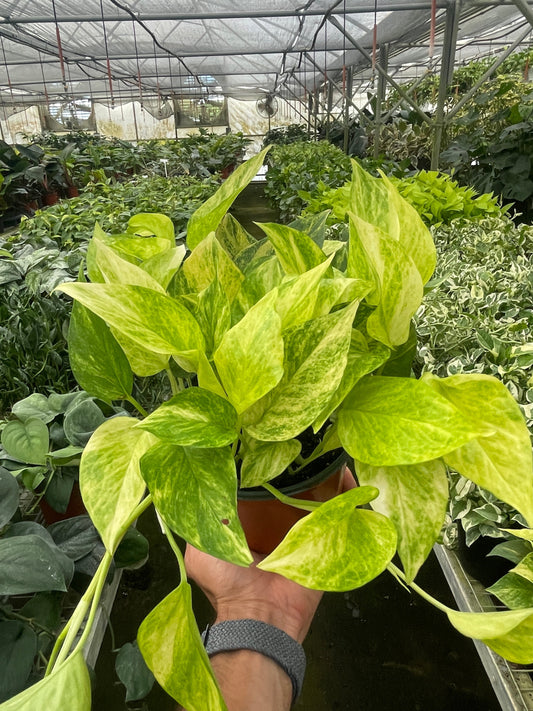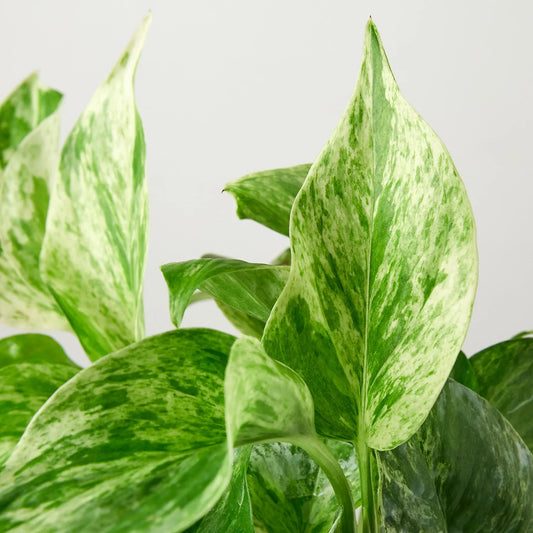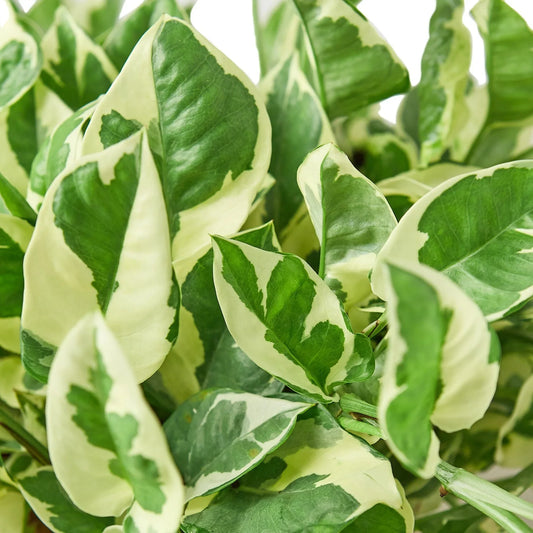5 Reasons Why Your Bird's Nest Fern Is Not Growing
Cafe Planta Team
Bringing a bird's nest fern into your home can feel like introducing a piece of the rainforest into your living room. With its bright green, wavy leaves that grow out from a central rosette, it's no wonder this plant is a favorite among plant lovers. But what happens when your bird's nest fern seems to hit a growth plateau?
In this article, we'll explore five common reasons why your bird's nest fern might not be thriving. From environmental factors to care techniques, we'll dive into practical solutions to help your fern flourish. So, if you're feeling a bit stumped about why your plant isn't growing like you'd hoped, you've come to the right place!
Not Enough Light
First things first, let's talk about light. Bird's nest ferns thrive in bright, indirect light. Imagine the dappled sunlight filtering through a forest canopy—that's the kind of light they love. If your fern isn't growing, it might be because it's not getting enough light.
Now, you might be thinking, "But I have it by the window!" While windows can provide light, direct sunlight can be too harsh and may scorch the leaves. On the flip side, placing your fern too far from a light source can leave it in the dark, literally and metaphorically.
- Solution: Aim to place your fern in a spot where it receives bright, filtered light. A north or east-facing window can be ideal. If you notice your plant isn't getting enough natural light, consider supplementing with a grow light.
- Tip: Rotate your plant every few weeks to ensure even light exposure, encouraging balanced growth.
Remember, patience is key. Adjusting the light might take some time to show results, so keep an eye on your plant over the next few weeks to see if there's any improvement.
Incorrect Watering
Watering can be a tricky business with bird's nest ferns. These plants like to be consistently moist but not soggy. Too much water can lead to root rot, while too little can cause the leaves to dry out and stop growing.
Think of your fern's watering needs like a delicate balance. It's like trying to keep a sponge damp—neither dripping wet nor bone dry. When you water, make sure you're doing it thoroughly, allowing the water to drain out the bottom of the pot.
- Solution: Check the soil moisture by sticking your finger about an inch into the soil. If it feels dry, it's time to water. Ideally, the top layer should feel slightly dry while maintaining moisture underneath.
- Tip: Use distilled or rainwater to avoid mineral build-up, which can affect your plant's health.
Adjusting your watering routine can make a significant difference in your fern's growth. Consistent care here will help your plant thrive.
Humidity Levels
Bird's nest ferns hail from tropical environments, which means they love humidity. If your home is on the dry side, especially during winter months, your fern might be struggling to grow due to low humidity levels.
Have you ever noticed how your skin feels dry in winter? Your fern feels the same way without enough moisture in the air. Lack of humidity can cause the leaves to lose their vibrant sheen and slow down growth.
- Solution: Increase humidity around your plant by misting it regularly, placing it on a pebble tray filled with water, or using a humidifier in the room.
- Tip: Group your plant with other humidity-loving plants to create a mini microclimate, which can naturally boost moisture levels.
Keeping your fern happy with the right humidity can lead to lush, healthy growth. Your plant will thank you for the extra effort!
Poor Soil Quality
The soil your bird's nest fern is planted in plays a critical role in its growth. Using the wrong type of soil can hinder its ability to absorb nutrients and water effectively.
Bird's nest ferns prefer a well-draining potting mix that's rich in organic matter. A dense, compact soil can suffocate the roots, while a mix that's too loose might not retain enough moisture.
- Solution: Use a peat-based potting mix or a standard potting soil mixed with perlite to improve drainage and aeration.
- Tip: Consider adding some orchid bark to the mix for extra texture, which can help mimic the fern's natural growing conditions.
Re-potting your fern with the right soil can give it the boost it needs to start growing again. Think of it like giving your plant a new bed to stretch out and thrive.
Temperature Fluctuations
Bird's nest ferns are sensitive to temperature changes. They prefer a stable environment, ideally between 60-75°F (15-24°C). Sudden drops in temperature or drafts can stress your plant and slow down its growth.
Picture yourself in a cozy sweater, then suddenly stepping into a chilly breeze. It's not pleasant, right? Your fern feels the same shock with temperature swings.
- Solution: Keep your plant away from cold drafts, air conditioning vents, and heating sources. A consistent room temperature will help your fern feel more at home.
- Tip: Monitor the temperature in the room with a thermometer if you're unsure about fluctuations, especially if you notice your plant struggling.
By maintaining a consistent temperature, you can help your fern stay comfortable and encourage new growth. Consistency is key, just like with light and water.
Incorrect Fertilization
Fertilizing your bird's nest fern can be a bit of a Goldilocks situation—it needs to be just right. Too much fertilizer can burn the roots and leaves, while too little might leave your plant hungry for nutrients.
Think of fertilizing as giving your plant a little extra boost, like a multivitamin. But just like with vitamins, more isn't always better.
- Solution: Use a balanced, water-soluble fertilizer diluted to half strength during the growing season (spring and summer). Fertilize once a month to support healthy growth.
- Tip: Avoid fertilizing in the fall and winter when the plant's growth naturally slows down.
Getting the fertilization right can provide your fern with the nutrients it needs to grow vigorously. It's like giving it a balanced diet, tailored to its needs.
Pest Problems
Sometimes, the reason your bird's nest fern isn't growing is because of uninvited guests—pests. Common pests like spider mites, mealybugs, and scale can sap the life out of your plant, literally.
It's like a group of tiny vampires sucking the vitality out of your fern. They can weaken the plant and stunt its growth if not addressed promptly.
- Solution: Regularly inspect your plant for signs of pests. If you spot any, use a gentle insecticidal soap or neem oil to treat the infestation.
- Tip: Keep your plant clean by wiping the leaves with a damp cloth to remove dust and give pests fewer places to hide.
Handling pest issues early can prevent them from becoming a bigger problem. Your fern will appreciate the extra care and attention.
Natural Growth Cycle
Finally, it's important to remember that sometimes, your bird's nest fern might not be growing because it's simply resting. Plants, much like people, have natural growth cycles. It's normal for growth to slow down during certain times of the year, especially in the cooler months.
Think of it as your plant taking a little nap, conserving energy for future growth spurts.
- Solution: Don't panic if growth seems to have stalled. Keep up with regular care, and be patient. Your plant will start growing again when it's ready.
- Tip: Track your plant's growth patterns over time to understand its natural cycle and adjust your care routine accordingly.
Understanding your fern's natural rhythm can help you provide the right care at the right time, ensuring it stays healthy and happy.
Final Thoughts
Bird's nest ferns are beautiful, unique plants that can bring a touch of nature's wonder into any home. By addressing issues like light, watering, humidity, and more, you can help your fern thrive.
At Cafe Planta, we love sharing our passion for plants with others. Whether you're a seasoned plant parent or just getting started, we're here to help. If you have any questions or need advice, feel free to reach out via email or connect with us on Instagram. Let's grow together and create beautiful, thriving plant spaces!



















